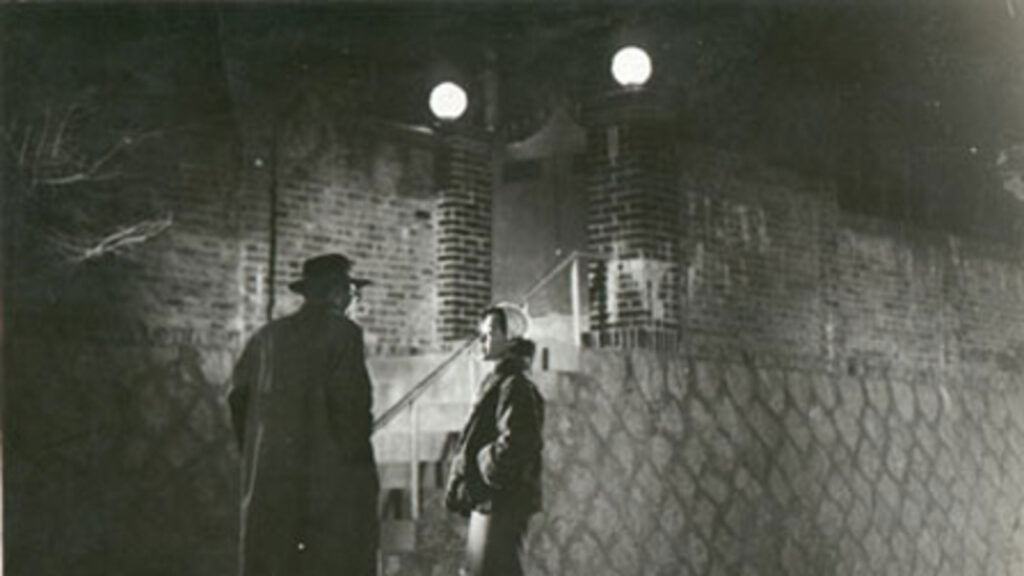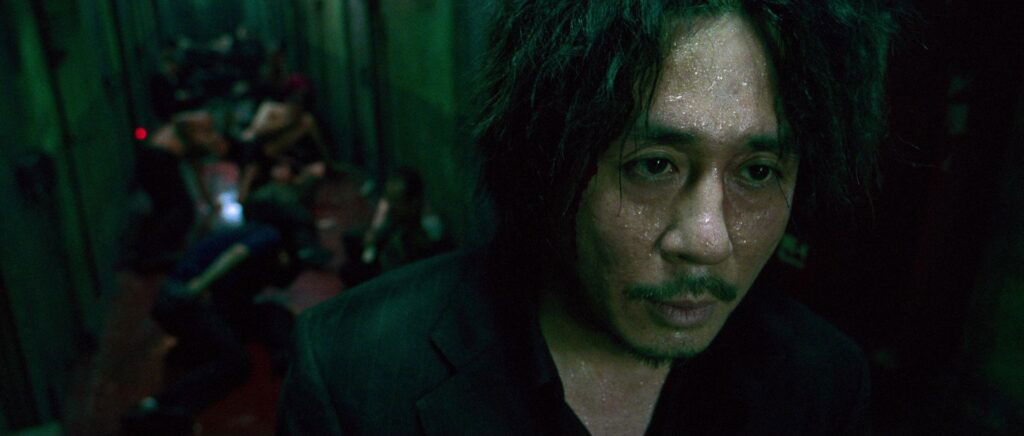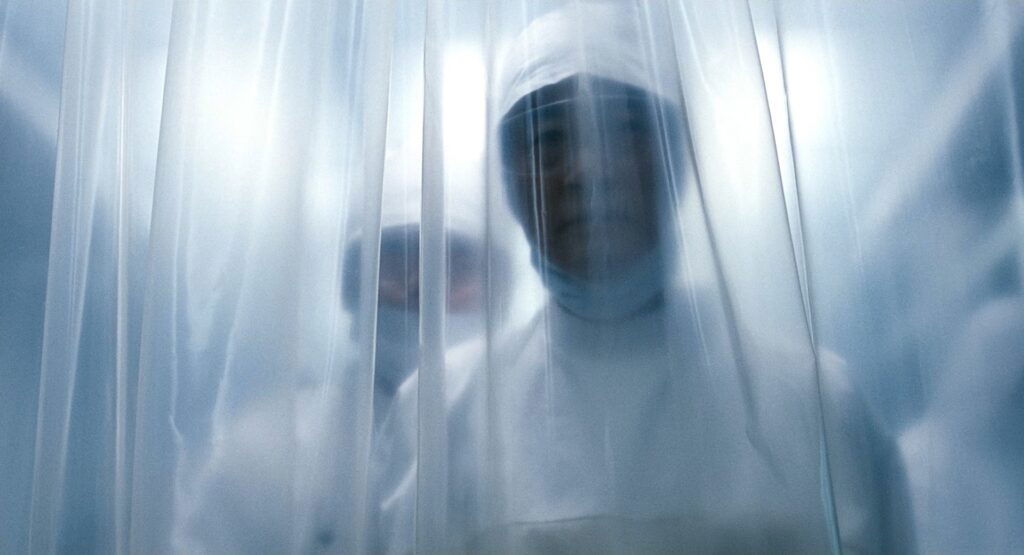Korean movies have taken the world by storm, with films like “Parasite” achieving unprecedented international success. This phenomenon has its roots in the New Korean Cinema movement of the 1990s and 2000s, a period that reshaped Korean films and laid the groundwork for their current international acclaim. From intense psychological thrillers to heartwarming family dramas, Korean cinema offers a diverse range of genres that appeal to various tastes. The rise of streaming platforms has made these films more accessible than ever, allowing audiences worldwide to discover the rich storytelling traditions of Korean filmmaking.
The New Korean Cinema of the 1990s-2000s marked a revolutionary period in South Korean movies, characterised by innovative storytelling, social commentary, and international recognition. This era saw Korean directors pushing boundaries, blending genres, and tackling social issues with a fresh perspective. The result was a body of work that resonated both domestically and internationally, paving the way for the current golden age of Korean cinema. From the gritty realism of crime dramas to the poignant exploration of family dynamics, Korean movies of this period set new standards for cinematic excellence.

Table of Contents
Historical Context
During the Japanese occupation, strict censorship restricted Korean filmmaking. The colonial authorities imposed tight controls on cultural expression, eventually banning Korean-language films entirely in 1942. This period of oppression stifled creativity and hindered the development of a distinctive voice in Korean movies. However, it also sowed the seeds of resistance and national identity that would later manifest in post-liberation Korean cinema. Despite these challenges, early Korean filmmakers managed to produce works that subtly critiqued colonial rule and preserved aspects of Korean culture.
The post-war era saw a significant American influence on Korean cinema. Hollywood films flooded the market, exposing Korean audiences to Western storytelling techniques and production values. Simultaneously, collaborations with the U.S. Army provided Korean filmmakers access to modern equipment and technical know-how. This period of cultural exchange laid the foundation for the future growth of the Korean film industry. It also introduced Korean audiences to genres like film noir and melodrama, which would later be reimagined in distinctly Korean ways during the New Wave.
The 1950s and 1960s are often referred to as the Golden Age of Korean movies. This period saw increased production and the emergence of influential films like “Madame Freedom” that challenged societal norms. Directors explored themes of post-war recovery, modernisation, and changing social values. The film industry flourished, producing over 100 films annually by the late 1950s. This era established a strong domestic film culture and nurtured a generation of talented filmmakers who would influence future generations. It also saw the development of uniquely Korean genres, blending traditional storytelling with modern cinematic techniques.
The 1970s and 1980s were marked by strict government control and censorship of the film industry. The authoritarian regime imposed severe restrictions on content, stifling creativity and forcing filmmakers to produce propaganda or politically safe material. Many talented directors were blacklisted or imprisoned during this period. However, this oppression also gave rise to a counter-culture of resistance in cinema, with some filmmakers finding subtle ways to critique the regime. This era of repression ultimately set the stage for the creativity that would follow in the 1990s.

Industry Changes in the 1980s and 1990s
The Korean Academy of Film Arts (KAFA) played a crucial role in nurturing new filmmaking talent during the New Korean Cinema era. Established in 1984, KAFA provided comprehensive training in various aspects of filmmaking, from screenwriting to directing and cinematography. Many prominent directors, including Bong Joon-ho, graduated from KAFA, bringing fresh perspectives and technical skills to the industry. The academy’s emphasis on practical experience and creative exploration helped shape a new generation of filmmakers who would go on to redefine Korean cinema.
The 1990s brought a significant relaxation of censorship laws, allowing filmmakers to explore more diverse and controversial themes. This newfound freedom enabled directors to address previously taboo subjects such as political corruption, social inequality, and historical traumas in Korean movies. The easing of restrictions led to a burst of creativity, with filmmakers pushing boundaries in both content and form. This period saw the emergence of bold, socially conscious cinema that wasn’t afraid to challenge viewers and provoke debate. The relaxation of censorship was a crucial factor in the development of the distinctive voice of New Korean Cinema.
The opening of the Korean film market to Hollywood distributors in the late 1980s and early 1990s had a profound impact on the industry. While it initially posed a challenge to domestic filmmakers, it ultimately spurred them to raise their standards and compete on a global level. The influx of Hollywood blockbusters exposed Korean audiences to high production values and sophisticated storytelling techniques. This competition forced Korean filmmakers to innovate and find unique ways to appeal to domestic audiences while also aiming for international appeal. The result was a new breed of Korean movies that combined local sensibilities with global production standards.
New policies, such as the 1996 Film Promotion Law, provided crucial support for independent filmmaking. These initiatives offered funding, training, and distribution opportunities for emerging directors and small production companies. The government recognised the cultural and economic potential of the film industry, leading to increased investment in Korean movies Korean as a form of soft power. This support allowed for greater diversity in Korean movies, nurturing voices and visions that might otherwise have been marginalised. It also helped create a sustainable ecosystem for film production, from art house cinema to commercial blockbusters.
Key Filmmakers and Their Contributions
Bong Joon-ho emerged as a defining voice of New Korean Cinema, gaining international acclaim for his genre-bending films with sharp social commentary. His works, including “Memories of Murder,” “The Host,” and the Oscar-winning “Parasite,” showcase his ability to blend dark humor, suspense, and incisive critiques of Korean society. Bong’s films often explore class dynamics and family relationships, using innovative storytelling techniques to engage audiences. His success has not only elevated Korean movies on the world stage but has also opened doors for other Korean filmmakers to reach global audiences.
Park Chan-wook became renowned for his visually striking and thematically complex works, particularly his “Vengeance Trilogy.” Films like “Oldboy” and “The Handmaiden” demonstrate Park’s mastery of visual storytelling and his penchant for exploring dark, often violent narratives. His unique style, blending elements of thriller, drama, and even dark comedy, has influenced filmmakers worldwide. Park’s work often delves into themes of revenge, redemption, and the consequences of violence, presented through meticulously crafted cinematography and powerful performances.
Kim Ki-duk’s controversial and thought-provoking films challenged conventions and gained recognition at international festivals. His works, such as “Spring, Summer, Fall, Winter… and Spring” and “3-Iron,” are known for their minimalist dialogue and powerful visual storytelling. Kim’s films often explore themes of violence, redemption, and the human condition, pushing the boundaries of cinematic expression. Despite, or perhaps because of, their controversial nature, Kim’s works have played a significant role in bringing Korean movies to the attention of art house audiences worldwide.
Lee Chang-dong’s contemplative dramas exploring profound human experiences earned him critical acclaim and a devoted following. Films like “Peppermint Candy” and “Poetry” showcase Lee’s ability to craft nuanced, character-driven narratives that resonate deeply with audiences. His works often focus on marginalised individuals and societal issues, presented through a lens of empathy and introspection. Lee’s contributions to New Korean Cinema demonstrate the power of subtle, thoughtful filmmaking in an era often dominated by more flashy, high-concept productions.

Themes and Styles of New Korean Cinema
New Korean Cinema is characterised by its bold exploration of social issues and critique of contemporary Korean society. Filmmakers of this era fearlessly tackled topics such as class inequality, political corruption, and the rapid modernisation of Korea. Korean movies like “Parasite” and “Memories of Murder” blend entertainment with sharp social commentary, engaging audiences while prompting reflection on societal problems. This willingness to confront uncomfortable truths head-on became a hallmark of Korean movies, contributing to their critical acclaim and global relevance.
One of the defining features of New Korean Cinema is its innovative approach to genre. Directors frequently blend elements from various film genres, creating unique cinematic experiences that defy easy categorization. For instance, Bong Joon-ho’s “The Host” combines monster movie thrills with family drama and social satire. This genre-blending approach allows filmmakers to explore complex themes while maintaining broad audience appeal. It also sets Korean cinema apart in the global marketplace, offering fresh perspectives on familiar genres.
New Korean Cinema frequently addresses national traumas, providing a means of collective catharsis and reflection. Films exploring the division of Korea, the Gwangju Uprising, and the IMF crisis offer powerful examinations of historical events that have shaped modern Korean society. For example, “Joint Security Area” delves into the complexities of inter-Korean relations, while “A Taxi Driver” revisits the Gwangju Uprising. These films not only educate younger generations about their history but also contribute to ongoing national dialogues about identity, reconciliation, and social progress.
Korean filmmakers of this era embraced innovative narrative techniques, pushing the boundaries of traditional storytelling. Non-linear narratives, unreliable narrators, and experimental structures became common features of New Korean Cinema. Park Chan-wook’s “Oldboy,” for instance, uses a complex, twist-filled narrative to keep viewers guessing until the final frame. These techniques not only engage audiences intellectually but also allow for more nuanced explorations of character psychology and thematic depth.
New Korean Cinema is known for its striking visual aesthetics and meticulous attention to cinematography. Directors and cinematographers collaborated to create visually stunning films that complement their narrative depth. From the neon-lit streets in Park Chan-wook’s films to the naturalistic beauty in Lee Chang-dong’s works, visual style became a crucial element of storytelling. This emphasis on visual artistry has not only elevated Korean movies artistically but has also made it more appealing to international audiences.

Women in New Korean Cinema
The New Korean Cinema movement saw the emergence of talented female directors who brought fresh perspectives to the industry. Filmmakers like Yim Soon-rye and Lee Kyoung-mi challenged the male-dominated field with their unique voices and storytelling approaches. Yim’s “Little Forest” and Lee’s “The Truth Beneath” showcase the diversity of themes and styles in women-directed Korean films. Their success has paved the way for more female filmmakers, contributing to a more inclusive and diverse Korean cinema landscape.
This era marked a significant shift in the portrayal of women in Korean films. Moving away from stereotypical roles, New Korean Cinema presented complex, multidimensional female characters. Films like “Sympathy for Lady Vengeance” and “The Handmaiden” feature strong female protagonists who drive the narrative. This evolution in character representation reflects changing societal attitudes towards women’s roles and experiences in contemporary Korea, offering more realistic and empowering portrayals of women on screen.
New Korean Cinema increasingly explored feminist themes, addressing issues of gender inequality and women’s experiences in modern Korean society. Films like “Take Care of My Cat” and “House of Hummingbird” explore the challenges faced by young women in a rapidly changing social landscape. These works not only provide commentary on gender roles and expectations but also contribute to broader discussions about feminism and social progress in Korea. The exploration of these themes has helped Korean movies resonate with global audiences interested in diverse perspectives on gender issues.

International Recognition and Success
Korean films began winning prestigious awards at major international film festivals, cementing their status in world cinema. Landmark achievements include Park Chan-wook’s “Oldboy” winning the Grand Prix at Cannes in 2004 and Kim Ki-duk’s “Pieta” receiving the Golden Lion at Venice in 2012. These accolades not only brought global attention to individual films but also highlighted the overall quality and artistic merit of New Korean Cinema. The culmination of this trend came with Bong Joon-ho’s “Parasite” winning the Palme d’Or at Cannes and multiple Academy Awards, including Best Picture, Best Director, Best Film Editing, Best Production Design, Best International Feature Film and Best Original Screenplay in 2020.
The international success of Korean movies led to a rapidly growing global audience. Streaming platforms played a crucial role in this expansion, making Korean movies on Netflix easily accessible to viewers worldwide. Films like “Train to Busan” and “The Handmaiden” found enthusiastic audiences far beyond Korea’s borders. This increased visibility not only boosted the commercial prospects of Korean cinema but also fostered greater cultural exchange and understanding. The global popularity of Korean films has contributed significantly to the broader Korean Wave (Hallyu) phenomenon, enhancing Korea’s soft power internationally.
Conclusion
The New Korean Cinema movement of the 1990s and 2000s was a period that redefined Korean filmmaking and its global perception. It demonstrated how a national cinema can overcome historical challenges, and achieve international recognition. The movement’s success in blending artistic merit with commercial appeal created a model for other emerging film industries worldwide. New Korean Cinema not only put Korean films on the global map but also contributed to a more diverse and inclusive global film culture.
The legacy of New Korean Cinema continues to shape both Korean and global film industries. Many directors who emerged during this period have gone on to even greater international success, while a new generation of filmmakers builds upon their foundation. The artistic and commercial strategies developed during this era continue to influence film production, distribution, and marketing worldwide. The movement’s impact extends beyond cinema, contributing to Korea’s soft power and cultural influence on a global scale.
Looking ahead, the future of Korean cinema appears bright, building on the foundation laid by the New Wave. With Korean movies on Netflix providing unprecedented access to new audiences every day. The industry continues to innovate, exploring new genres, technologies, and storytelling techniques. As global audiences become increasingly open to non-English language content, Korean cinema is well-positioned to reach even greater heights of international success. The ongoing evolution of Korean cinema promises to continue its significant contribution to the global cinematic landscape for years to come.
Best Korean Movies
- The Quiet Family (1998) Director: Kim Jee-woon Genre: Korean movies horror
- Shiri (1999) Director: Kang Je-kyu Genre: Korean movies action
- Attack the Gas Station (1999) Director: Sang-Jin Kim Genre: Korean movies action
- Peppermint Candy (1999) Director: Lee Chang-dong
- Joint Security Area (2000) Director: Park Chan-wook Genre: Korean movies action
- The Foul King (2000) Director: Kim Jee-woon Genre: Korean movies comedy
- My Sassy Girl (2001) Director: Jae-young Kwak Genre: Korean movies romance
- Failan (2001) Director: Hae-sung Song
- Friend (2001) Director: Kyung-taek Kwak
- Sympathy for Mr. Vengeance (2002) Director: Park Chan-wook Genre: Korean movies action
- Oasis (2002) Director: Lee Chang-dong Korean movies romance
- Oldboy (2003) Director: Park Chan-wook Genre: Korean movies action
- Memories of Murder (2003) Director: Bong Joon Ho Genre: Korean movies action
- Save the Green Planet! (2003) Director: Joon-Hwan Jang Genre: Korean movies suspense
- Silmido (2003) Director: Kang Woo-suk Genre: Korean movies action
- A Tale of Two Sisters (2003) Director: Kim Jee-woon Genre: Korean movies horror
- Tae Guk Gi: The Brotherhood of War (2004) Director: Kang Je-kyu Genre: Korean movies action
- 3-Iron (2004) Director: Kim Ki-duk Korean movies romance
- Tale of Cinema (2005) Director: Hong Sang-soo
- Welcome to Dongmakgol (2005) Director: Kwang-Hyun Park Korean movies comedy
- Crying Fist (2005) Director: Ryoo Seung-wan
- A Bittersweet Life (2005) Director: Kim Jee-woon Genre: Korean movies action
- The Host (2006) Director: Bong Joon Ho Genre: Korean movies horror
- A Dirty Carnival (2006) Director: Ha Yoo Genre: Korean movies action
- The Chaser (2008) Director: Na Hong-jin Genre: Korean movies action
What is the Korean New Wave in cinema?
The Korean New Wave is a pivotal movement in South Korean film that emerged in the 1980s and 1990s. It’s characterized by films that boldly address social issues and redefine genre conventions. This movement marked a departure from previous eras of Korean cinema, introducing more complex narratives and innovative storytelling techniques. Directors began exploring themes like political corruption, rapid industrialization, and changing family dynamics. The New Wave also saw increased experimentation with film form and style, blending elements of traditional Korean culture with modern cinematic techniques. The 1996 Busan International Film Festival officially recognized this movement, cementing its importance in Korean cultural history and setting the stage for the global recognition of Korean cinema.
How did the Korean New Wave change filmmaking?
The Korean New Wave transformed South Korean cinema by introducing innovative, diverse, and socially conscious films. This era saw a shift from conventional narratives to more daring and experimental storytelling. Filmmakers began tackling previously taboo subjects, offering critical perspectives on Korean society and history. The movement also elevated the technical aspects of Korean cinema, with improved production values and cinematography. It captivated domestic audiences with its fresh approach and gained international acclaim, putting Korean cinema on the global map. This period nurtured a new generation of talented directors and actors who would go on to achieve worldwide recognition. The Korean New Wave’s influence extended beyond Korea, inspiring filmmakers globally and challenging Hollywood’s dominance in world cinema.
Why did South Korean cinema surge in the 1990s?
The 1990s boom in South Korean cinema resulted from a confluence of factors. Primarily, it was driven by the easing of political restrictions following the Korean War and the country’s division. This political shift allowed for greater creative freedom and increased investment in the film and TV industries. The government began to view cinema as a valuable cultural export, leading to supportive policies and funding. Additionally, the rise of a new generation of filmmakers educated abroad brought fresh perspectives to the industry. The growing middle class in Korea also created a larger domestic audience for films. These factors combined to create a fertile ground for cinematic innovation and production, sparking a renaissance in Korean filmmaking.
What sparked the Korean New Wave?
The Korean New Wave was sparked by a combination of social, political, and cultural factors. The June Democracy Movement of 1987 played a crucial role, ushering in a new era of political freedom and social awareness. This coincided with resistance to Hollywood’s direct distribution in Korea, fueling a desire to develop a strong, distinctly Korean cinema. The growing progressive and nationalistic sentiments among Korean intellectuals and artists also contributed significantly. These factors led to a reimagining of what Korean cinema could be, encouraging filmmakers to explore new themes and styles. The economic growth of South Korea in this period also provided the financial backing needed for this cinematic revolution. Together, these elements created the perfect storm for the emergence of the Korean New Wave.